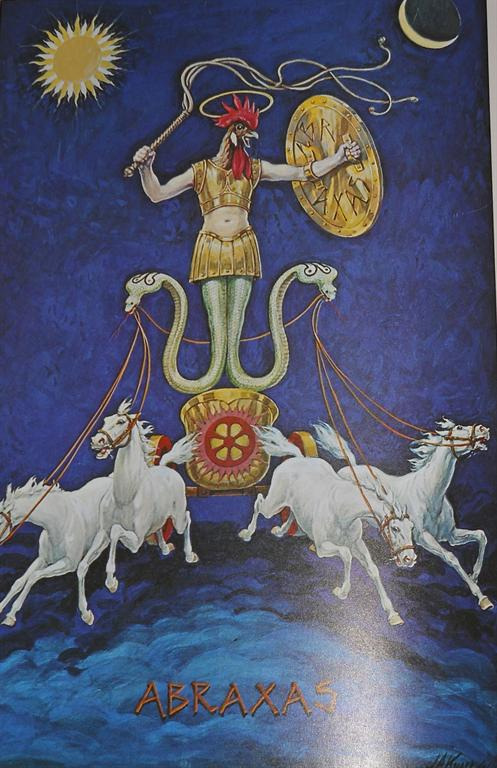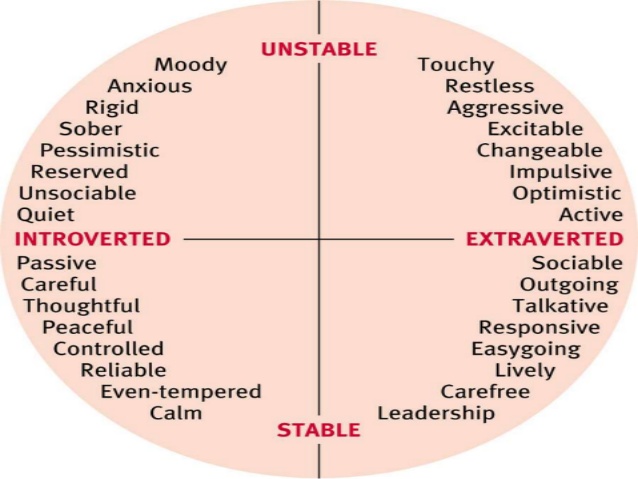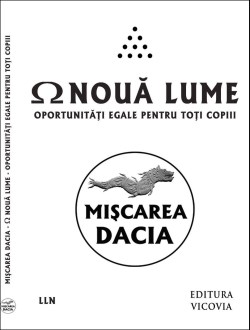 Vă invit să vă alăturaţi grupului Facebook Mişcarea DACIA, ce-şi propune un alt fel de a face politică!
Vă invit să vă alăturaţi grupului Facebook Mişcarea DACIA, ce-şi propune un alt fel de a face politică!Citiţi partea introductivă şi proiectul de Program, iar dacă vă place, veniţi cu noi !
O puteţi face clicând alături imaginea, sau acest link
Posts Tagged ‘Freud’
Hyperian History Of The World (20th Century, Part 2)
Hyperian History Of The World (20th Century, Part 2)
The chaos of 20th century science showed clearly all of the problems with human academia. The ancient Greek philosophers had been very aware of their own individual existence as being one individual part of the whole of existence, and the temple of Apollo at Delphi had been inscribed with the words ‘Know Thyself’, showing how much importance had been placed on understanding one’s own self in order to understand the rest of existence.
Unfortunately, since then human academia had become severely fractured and splintered, almost certainly due to the malevolent effects of irrational religions and the dominance of the old world powers over humanity. The Greek philosophers were not only philosophers, but also scientists, mathematicians, psychologists, politicians, artists, all in one. 20th century academics, on the other hand, may have been experts in one field, but tended to be utterly ignorant of other fields, thus severely limiting what they were able to understand about their chosen field. Without the right philosophical underpinning, science had descended into madness, a madness from which it has still yet to emerge.
A big problem was that scientists did not ‘know themselves’ as per the Apollonian inscription. Scientists tended to be extrovert empiricists, looking out into the physical world around them, making observations with their senses and drawing their conclusions based only on this. This had the effect of creating a worldview which alienates the universe from the individuals who inhabit it. Quantum Mechanics was entirely founded on the ‘observer’ yet at no point was the ‘observer’ given any kind of definition. Scientists could make no sense of the mind of the individual, and indeed, many scientists didn’t even acknowledge the existence of such a mind, given that it was not observable.
The main reason scientists failed to appreciate their own shortcomings, was because of a major lack of psychological understanding. It was ironic then, that at about the same time as Relativity and Quantum Mechanics were being developed, Psychology was becoming a major academic discipline, thanks mostly to two giants of the field, Sigmund Freud and Carl Jung.
Sigmund Freud developed a model of the mind, or the psyche, consisting of three major parts, the Id, the Ego and the Super Ego.
The Id is the more primitive, instinctual part of the psyche. This is the part of us which selfishly seeks pleasure and is mostly unconscious. All of our base instincts, all of our primitive desires, these are of the Id. The Id wants what it wants, and it wants it now. The Id has no regard for the desires of anyone else, indeed, it is hardly even aware of the existence of anyone else, such is its selfishness. To get what it wants, the Id will do anything, it will fight off anyone or anything that gets in its way. The Id has a very narrow view of the world, seeing its way only to the next source of pleasure. It has no concept of the wider world, no concept of the past or the future. It lives permanently in the moment and seeks only to maximise the pleasure it feels in that moment.
The Id is contrasted by the Super Ego. The Super Ego is selfless, and is concerned with the world at large. The Super Ego is very aware of other people and of the rules and conventions of the society in which it lives. It wishes to live by those rules and conventions and to do no harm to anyone else. More than this, the Super Ego seeks to perfect the world around it and everyone else in it. It wants what is best for everyone and it will help others often at its own expense. It is highly aware of the past and of the future; it learns from the past in order to create a better future.
The Ego is the part of the psyche which mediates between the two others. The desires of the Id so often contradict those of the Super Ego and vice versa, therefore the Ego has a very difficult job. Most of the time, the Ego makes its decisions quickly or even unconsciously, resulting in compromises which don’t particularly satisfy either the Id or the Super Ego. If the Id and the Super Ego represent the fracture of the psyche, the Ego, when it operates in this manner, doesn’t really heal the fracture at all but, rather, it merely suppresses both the Id and the Super Ego and this only really serves to maintain the current state of fracture. Most people are dissatisfied with their lives, their Id is not receiving its pleasure, yet neither is their Super Ego contributing to creating a better world.
In order for the Ego to do a better job, it must become more conscious of what it is doing. Then, rather than merely finding a compromise between the Id and Super Ego, it can instead seek a higher synthesis of the two, a state which satisfies both of them. This would result in progression, upward motion towards a higher state of existence.
We all have our unconscious Id selfishly striving for pleasure, and we all have our Super Ego, selflessly hoping to please everyone else in society. The conflict between the two must be addressed consciously by the Ego which must not merely compromise, but must find a higher Synthesis, just as in Hegel’s Dialectic. Only a highly conscious Ego can raise the Psyche to a higher level, healing the fracture and attaining to Unity.
Freud’s great rival was Carl Jung. Jung developed a model of the psyche more complicated than that of Freud. Like Freud, Jung recognised that the psyche contained elements that were both conscious and unconscious, and, like Freud, he recognised that there was conflict between various elements of the psyche, conflict that could be resolved, leading to a higher state of psychic health. Jung recognised, as per the Dialectic, that opposing elements had to be synthesised in order to lead to a higher level. This was a process Jung called Individuation.
For Jung, the Ego is the centre of our consciousness (yet not part of the unconscious). This is our everyday sense of who we are in this lifetime, a constant flow of experiences based upon our interaction with the physical world in our immediate surroundings. The Ego responds to the world around it using four functions: Sensing, Intuition, Feeling and Thinking. It also acts both introvertedly and extrovertedly. An individual Ego tends towards some of these functions more than others, leading to differing personality types.
Sensing is opposed by Intuition and Feeling is opposed by Thinking. Someone who is a sensing type is lees likely to use intuition and someone who is a feeling type is less like to use thinking, yet this is further complicated by whether they tend towards introversion or extroversion.
Based on these functions, the Ego responds to life in the physical world, yet it is only a small part of the whole psyche. The Ego only makes use of information which it has an immediate use for. Everything else is pushed down into the unconscious, or more specifically according to Jung, the Personal Unconscious.
Jung also developed the concept of what he called the Collective Unconscious. Whereas the Personal unconscious is specific to each individual, made up of all our experiences which have not been made conscious, the Collective Unconscious is a sort of psychological ‘blueprint’ common to all of us.
Jung did not believe that our minds were ‘blank’ when we are born and then are populated with ideas as we grow, rather, he realised that our minds all contain the same pieces of information from the start, information which is experienced differently for each of us depending on our experiences.
The Collective Unconscious is populated with what Jung called Archetypes. Every mind contains the same archetypes, we simply experience them in different ways, based on our differing lives and culture etc. Yet we recognise the archetypes in others, archetypes such as the Mother, the Father, the Teacher, The Wise Old Man, the Ally, the Enemy, the Lover etc.
Jung also identified other elements of the Psyche:
1) The Persona. This is the version of yourself that you present publicly to other people. It is the part of you which conforms to the customs of your society. We all have elements of our psyches which society might deem to be unacceptable, and we hide these things behind the Persona, or mask. The Persona is a thin veil yet it is easy to identify too strongly with it, forgetting who you really are.
2) The Shadow. Many of the elements that we hide behind the Persona, the things which society deems unacceptable, or the aspects of ourselves which we do not like, are all repressed into the Shadow. Therefore, our Shadow is the complete opposite of the Persona, an aspect of the psyche from which we are alienated. Often, we recognise elements of our shadow in others, causing us to strongly dislike them when, in fact, we are simply recognising something of ourselves in them, something which we do not like about ourselves. This is called projection. A crucial part of individuation is to integrate the Shadow, to realise that these elements are still a part of you and to overcome the alienation we feel towards our Shadow.
3) The Anima/Animus. This is the part of the psyche based upon the opposite sex, Anima in a man and Animus in a woman. To identify as one gender is to lead a one-sided existence. Like the Shadow, the Anima/Animus must be integrated in order to heal the fracture of the psyche. Also like the Shadow, we project the contents of our Anima/Animus onto others of the opposite sex, recognising in them the elements of our ideal woman or man, when really these are elements of ourselves which we must integrate.
Finally, Jung spoke of the Self. The Self is the deepest part of our psyche and the part most alienated from the Ego, yet the Self is indeed our True Self, it is who we truly are. Prior to individuation, the Self would seem utterly strange and foreign to us, we would never believe it to be our true self, so alienated are we from it. Yet after successful individuation, after integrating the Shadow and the Anima/Animus and all the other aspects of the psyche, our identification shifts from the Ego to the Self, or, rather, the Self absorbs all other elements of the psyche, alienation ceases, all conflicts are resolved and we become whole, we attain to Unity.
Unfortunately, despite the highly influential work of these great psychologists, 20th century scientists, philosophers and mathematicians remained in a state of fracture, alienated and separated from one another, focused solely on their own narrow field. They failed to understand their need for each other, their need for unity, because they had failed to ‘know themselves’.
Brice Merci – hyperian
Analiză Freudiană
„Astăzi, Dumnezeu și Diavolul sunt interschimbabili, ca şi Binele și Răul. Ceea ce conservatorii numesc Dumnezeu și Bine sunt interpretate ca Diavol și Rău de către liberali și invers. Aceasta duce la o confuzie totală pe de o parte, iar pe de altă parte, la un nivel mai mare de fanatism decât în întreaga istorie a umanității. Este o situație incontestabilă … o fractură totală a Psihicului Uman.
Conservatorii au devenit expresii ale ID-ului freudian, asociat cu Individualismul extrem și detestarea Colectivului – în timp ce Liberalii sunt expresii ale SUPEREGO-ului freudian, preocupaţi de Corectitudine Politică, Multiculturalism, Toleranță…
Rasa umană și-a pierdut mințile.
În modelul lui Freud al psihicului, EGO-ul mediază între ID şi SUPEREGO.
EGO, „mediatorul”, este exact ceea ce a pierdut omenirea. Acum există o confruntare permanentă între Id și Superego și nicio posibilitate de a stabili o punte între ele. Polarizarea este totală. Este o situație fără precedent în istoria omenirii, iar ferocitatea sa este amplificată enorm de către Social-Media.
Ceva va „exploda”. Situația este nesustenabilă.”
ReLigare (8)
Apollo și Dionysos
Apollo este Intelect și Dionysos este Voinţă/Will. Dionysos este Id, în timp ce Apollo este SupraEul ( Psihicul după Freud: Id, Eul, SupraEul). Dionysos este Irațional (în măsura în care evită orice standard obiectiv și este condus exclusiv de impulsurile sale). Apollo este Rațional.
Un al treilea Dumnezeu – Dumnezeul roman Janus – acționează ca Eul, care mijlocește între Apollo și Dionysos. Janus are două fețe și poate privi în față și înapoi. Janus poate, prin urmare, să privească şi Id-ul și SuperEul și să negocieze Rațional între ele.
Am putea numi Satan Id, Lucifer Superego și Abraxas Ego.
Acestea sunt toate schemele dialectice: Id-ul este Teza, SuperEul este Antiteza, și Eul este Sinteza.
Universul începe ca Dionysus și manifestă o feroce la Voinţă de Putere. Apollo
evoluează treptat de la Dionysus, la fel ca în teoria Creierului Triunghiular (Triune Brain): Neocortexul (unde are loc procesarea rațională) evoluează din creierul iniţial/stem (creierul reptilian dedicat Voinței Pure) și Sistemul Limbic (dedicat Sentimentelor și Intuițiilor).
Majoritatea bărbaților sunt controlați de Creierul Reptilian, iar majoritatea femeilor de cel Limbic. Omenirea mai înaltă este controlată de Neocortex. Id-ul Freudian este situat în Creierul Reptilian și în Sistemul Limbic „inferior”. SuperEul Freudian este situat în Sistemul Limbic „superior” și Neocortexul Inferior. Eul freudian este situat în Neocortexul Superior.
Neocortexul Superior este viitorul omenirii, lansarea umanității la divinitate.
Omenirea Mythos este definită de Creierului Reptilian și de cel Limbic. Logosul omenesc este definit de Neocortex.
Uită-te la Avraamism … absolut deconectat de Neocortex: “Raţiunea este Curva diavolului “, a spus Luther. Avraamismul este despre Credință, care nu are nicio legătură cu Rațiunea. Uită-te la Islam, plin de teroriști maniacali și persecutori intoleranți. Aceasta este o religie pură Id (și iudaismul ar fi fost exact același lucru dacă „poporul ales” s-ar fi dovedit în Istorie mai de succes din punct de vedere militar).
Creștinismul este mai mult o religie a Creierului Limbic. În Biblia creștină, Vechiul
Testament este despre Creierul Reptilian și Noul Testament despre Creierul Limbic.
Tora și Coranul sunt ambele exclusiv legate de Creierul Reptilian. Nici o altă religie în afară de Iluminism nu este interesată de Neocortex.
Iluminismul este religia monismului dialectic (auto-rezolvare, auto-optimizare
matematică ontologică). Începe ca Voința Pură (Dionysos), apoi evoluează spre Intelect (Apolinic). Prima încercare de înțelegere a lumii este prin Emoționalismul Mythos, care este apoi înlocuit de Raționalismul Logosului.
Dacă vrem să devenim Dumnezei, trebuie să fim ghidați de Neocortex, Logos și Apollo.
Acesta este destinul Omenirii „Noi”. Omenirea „Veche” este blocată în nebunia lui Mythos. Este garantat că a doua ne duce drept spre EXTINCŢIE.
Demiurgul YHWH – Satana, „Dumnezeul” Avraamic, este Dionisian, condus de Voința Pură.
Citiți Tora, Vechiul Testament și Coranul și veți vedea că ele privesc Dominația și Supunerea, morcovul (raiul) și bastonul (iadul) și Controlul Minții prin Spălarea Creierului.
Masa Rotundă Meritocratică, pe de altă parte, se referă la Raționalism și la abolirea Stăpânilor și a Sclavilor.

Tags: Abraxas, Apollo, Avraamism, Creştinism, Dyonisos, Ego, Freud, ID, islam, Iudaism, Logos, Lucifer, Mytos, Noul Testament, Religie, Satana, Super Ego, Triune Brain, Vechiul Testament, Will, Will to Power, YHWH
PSIHOCOSMOS (8)
Libido
“Eu nu sunt un om, sunt dinamită” – Nietzsche
În timp ce Freud folosea termenul “libido” pentru a se referi la Energia Sexuală, Jung i-a lărgit sfera de aplicare, astfel încât acesta să se aplice Energiei Psihice în general, adică energia care conduce psihicul. Dar ce înseamnă asta? De fapt, cel mai simplu mod de a gândi este că Libido-ul este Energia care sălăşluieşte în Arhetipuri.
Presupunând că tratăm Ego ca “Arhetipul Conștienței” care naşte din NeConștiență și Persona ca Masca Publică Arhetipală a Ego-ului, atunci putem concluziona că Psihicul are de-a face doar cu Arhetipuri. Arhetipurile se manifestă ca Simboluri și Imagini, în special ale oamenilor, astfel încât ne putem gândi la Libido ca la Energia pe care alegem să o investim în aceste Simboluri și Imagini. Cantitatea de Libido pe care o alocăm indică efectiv cât de mult apreciem ceva. Libido-ul, ca toată Energia, nu poate fi nici creat, nici distrus, ci doar transformat sau redirecționat. Astfel, dacă libido-ul este retras dintr-un arhetip, el trebuie să se manifeste într-un alt arhetip, adică dacă dispare într-un loc, trebuie să reapară în altul. Dacă un musulman își reprimă dorințele sexuale, energia va reapărea în Umbra sa și este pe drumul său spre a deveni un fundamentalist sinucigaş. În mod paradoxal, dacă musulmanii ar face sex sănătos şi ar înceta să creadă tâmpenia celor 72 de virgine, ar dispare şi sinucigaşii.
Psihicul nostru poate fi privit ca un labirint complicat de canale care leagă arhetipurile, cu libidoul care curge prin aceste canale, care curge lent în unele locuri, rapid și fără probleme în altele, blocându-se în unele locuri și apoi redirecționându-se.
Sarcina noastră este să găsim un flux psihic optim care să ofere energie maximă tuturor arhetipurilor noastre pozitive și sănătoase și să înfrunte energiile negative și nesănătoase, astfel încât să nu ne poată deteriora.
Dacă vă simțiți “în jos” – deprimat, lipsit de energie, apatic, neinteresat – înseamnă că energia voastră este în locuri greșite. O persoană sănătoasă este o persoană energizată, activă psihic, angajată, concentrată, încrezătoare. El știe exact unde se află, unde merge, ce face. E în zonă.
Tu esti?
“Oamenii Înteligenţi trăiesc de regulă mai mult“.
Extraversiune versus Introversiune
Extravertiţii se raportează la „lumea exterioară”, iar Introvertiţii la „lumea interioară”.
Extravertiţii tind să se concentreze asupra Oamenilor și Lucrurilor și Introverttiţii asupra Ideilor și Imaginilor.. Este imposibil ca un extravertit să fie un pustnic sau un introvertit, sociabil.
Extravertiţii sunt obsedaţi de Obiect în toate formele sale – lucruri, realizări externe, chiar și oameni. Ei sunt confortabili și mulţumiţi atunci când participă energetic la lumea exterioară, atunci când stimulează relațiile umane. Dacă doriți să distrugeţi psihologic un extravertit, trebuie doar să-l izolați, astfel încât singurul obiect de care trebuie să se ocupe este el însuși. El crede că este morbid, nenatural și nesănătos ca oamenii să-și petreacă prea mult timp singuri. Extravertiţii sunt aproape întotdeauna „other-directed” sau „tradition-directed”.
În multe privințe, cele două mari rele ale lumii noastre sunt tendința de a fi „Other-Directed” şi „Tradition-Directed”.
Capitalismul (ideologia consumului și a obiectivizării lumii) și Moda (căutarea la alţii pentru a defini ceea ce este “cool” și ceea ce nu este) sunt arhetipal „other-directed”. Religiile Abrahamice care depozitează Trecutul în mijlocul Prezentului sunt arhetipal „tradition-directed”. Acestea sunt ambele produse ale mentalității extraverse, deoarece doar extravertiţii permit să fie definiţi de ceilalți. Mentalitatea extraversă, atunci când este combinată cu o atitudine subiectivă, este rădăcina înclinației îngrozitoare a omului de a accepta să fie Sclav.
Indivizii contrari Sclaviei în toate formele ei, sunt invariabil Dominanţi – Introvertiţi.
Introvertiţii se definesc cu privire la Subiect mai degrabă decât la Obiect. Ei sunt preocupaţi de Idei, Sentimente, Gânduri, Fantezii, Speculații, Vise, Speranțe, Teorii, Imagini, Intuiții – toate activităţi ale minții îndreptate spre Interior. Un introvertit se poate uita timp de o oră la o frunză de pe un copac compunând poezie.
Introvertitul este preocupat de Detalii și Intensitate.
Extravertitul pe de altă parte poate fi comparat cu un televizor cu mai multe canale. Extravertitul vrea să aibă cât mai multe experiențe posibil. Vrea doar input senzorial constant.
Schopenhauer, care a avut o influență uriașă asupra lui Jung, a scris: “Oamenii (extravertiţi) au nevoie de activitate externă pentru că nu au activitate internă”.
Introvertiţii au o “excitare corticală” ridicată, ceea ce înseamnă că Mintea lor este mereu forfotind de activitate, deci nu au nevoie de stimuli externi.
Extravertiţii dimpotrivă, au o „excitare corticală” scăzută – nu este prea mult de făcut în interior – și au nevoie de mediul înconjurător pentru a le oferi stimulente.
Introvertiţii sunt concentraţi fundamental pe domeniul r = 0, în timp ce extravertiţii sunt preocupaţi de domeniul r> 0.
Extravertiţii guvernează lumea deoarece sunt mult mai preocupați de lucrurile lumești. Introvertiţii sunt preocupaţi de cele spirituale.
Materialismul și Extraversiunea merg mână în mână.
Introvertiţii sunt în mod natural înclinaţi spre Idealism.
Dacă aceştia din urmă sunt şi Raţionali, avem de a face cu Idealiştii-Raţionalişti.
Tu, unde te încadrezi?
Dacă eşti prea Extravertit, exersează Introversiunea şi îţi vei Echilibra Psihicul.
Dacă eşti prea Introvertit, exersează Extraversiunea în acelaşi scop.
De regulă, Introverşii reuşesc această „operaţie alchemică” ce se numeşte HOMEOSTAZĂ.
Povestiri Arhetipale
Povestea lui Theseus și a Minotaurului este adesea luată ca o metaforă a interacțiunii Ego-ului și a Animei. Fecioara Ariadna (reprezentând Anima, Soul-Immage) îl conduce pe Theseus (reprezentând Ego-ul,l Sinele Inferior) în Labirint (reprezentând NeConștientul). Theseus s-ar fi pierdut dacă nu ar fi avut de la Ariadna un fir de aur pe care să-l desfăşoare.
Theseus a ucis Minotaurul (reprezentând Umbra lui) în centrul Labirintului, apoi în siguranță a revenit la îmbrățișarea Animei sale. El a devenit mai Puternic şi mai Înțelept. El s-a ocupat de Umbra lui, și-a explorat NeConștientul și și-a îmbrățișat Anima. Și astfel, şi-a depășit
Sinele Inferior şi a dobândit Sinea Superioară.
Vrăjitorul din Oz este o fantezie modernă care abundă cu arhetipuri, de unde provine şi a sa popularitate.
Star Wars a fost conceput ca o poveste arhetipală. Este interesant de observat că filmele originale erau mult mai populare decât cele care au urmat. Asta pentru că ultimele filme au fost obsedate de efectele vizuale și au încetat să spună o poveste artetipală.
Figura Animus-ului unei femei poate fi percepută în personaje precum domnul Darcy („Mândrie şi Prejudecată de Jane Austen), dl Rochester (din „Jane Eyre” de la Charlotte Bronte) și Heathcliff (din „Wuthering Heights” de Emily Bronte) sau în “prințul frumos”, “cavalerul strălucitor”, “străinul înalt, întunecat” din poveste tragică Arthuriană despre Lady of Shalott, eroina care îi iubește pe Sir Lancelot, dar nu reușește să-l aibă, murind de „inimă rea”. Ea a fost distrusă de eșecul ei de a se alătura cu Animus-ul ei.
În povestea lui Samson și Delilah, Samson este castrat metaforic când îi permite lui Delilah să-i taie părul. Imaginea “vaginului dentat” – vaginul cu dinți – este un simbol puternic al fricii masculine de o Anima „masculinizată”.
Multe cărți și filme precum Harry Potter, Lordul Inelelor și Matrix sunt pline de arhetipuri. Cele mai de succes povestiri sunt invariabil cele cu accent arhetipal.
Din nefericire, poveștile despre Moise, Isus Hristos și Mohamed au și ele o natură arhetipală și au înșelat și au întunecat miliarde de Minți umane.
Povestea arhetipală va conține întotdeauna un Erou, o Călătorie, o Comoară, Întunericul și Disperarea, un Inamic teribil, o Imagine Sufletească Înfricoșătoare. Vor fi trădători, prieteni falşi, dușmani, magie, superputeri, testări, împiedicări temporare, temporare victorii, consilieri înțelepți, consilieri răi. Eroul trebuie să-și negocieze drumul prin toate acestea. Ca să aibă succes, el trebuie să se transforme în Sinele Său Superior.
Nu este momentul să vă activați propriul arhetip de erou? Nimeni nu spune că va fi ușor, dar satisfacţiile vor fi impresionante. Cultivă Arhetipurile Superioare, Pozitive şi vei Deveni asemenea lor!













